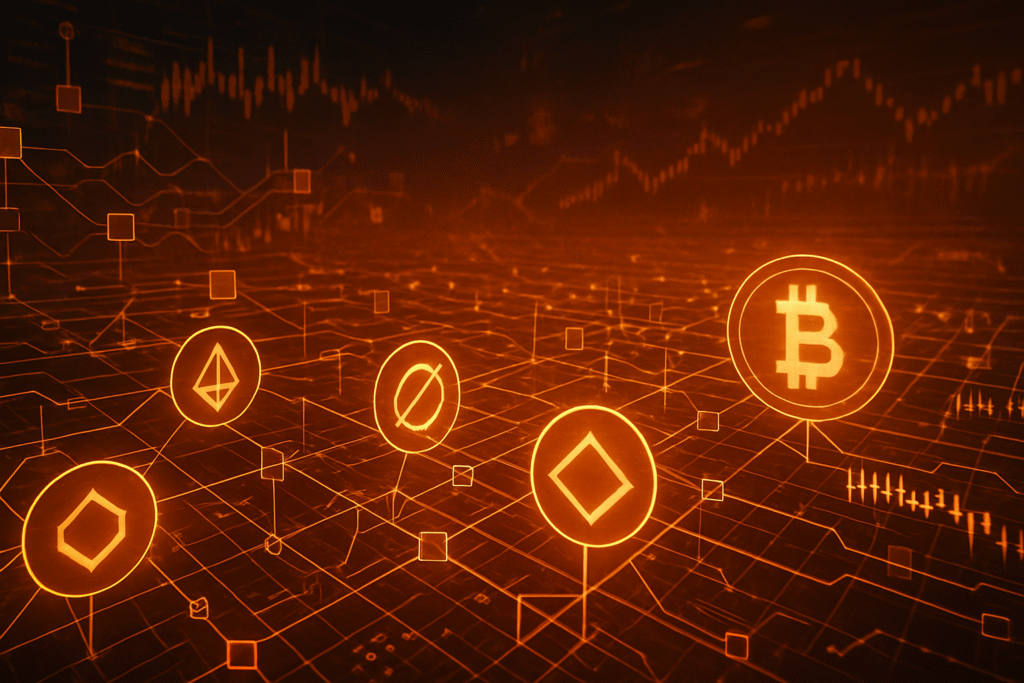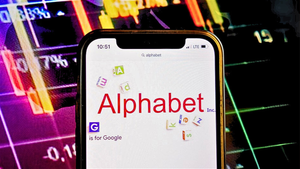
October 3, 2025 – The Decentralized Finance (DeFi) sector is experiencing a period of profound transformation, characterized by an accelerating pace of innovation, a robust growth trajectory, and a maturing, albeit complex, regulatory landscape. As of October 2025, new frontiers in AI integration, omnichain solutions, and the tokenization of Real-World Assets (RWAs) are pushing the boundaries of what's possible within Web3. However, this progress is shadowed by persistent security vulnerabilities, with billions lost to exploits and a worrying trend of audited contracts still falling victim to sophisticated attacks. The market has reacted with a mix of renewed confidence, evidenced by Bitcoin's (BTC-USD) surge past $120,000 and significant altcoin rallies, alongside a cautious adaptation to evolving security risks and regulatory frameworks.
This dynamic interplay of groundbreaking advancements and formidable challenges is shaping the future of finance, signaling DeFi's undeniable resurgence and its growing influence on the broader crypto ecosystem. The sector's ability to innovate while simultaneously addressing critical issues like security and regulatory compliance will determine its long-term viability and its capacity to attract mainstream adoption. The ongoing evolution underscores DeFi's pivotal role in redefining financial services, making its current state a critical juncture for investors, developers, and regulators alike.
Market Impact and Price Action
The DeFi sector has demonstrated a "robust and undeniable resurgence throughout 2025," particularly gaining momentum in the third quarter, signaling a renewed investor confidence that has translated into significant market movements. This positive sentiment has been broadly reflected across the cryptocurrency landscape, with Bitcoin (BTC-USD) notably rallying to an impressive $120,000 in early October 2025. This flagship cryptocurrency's performance often acts as a bellwether for the broader market, and its strong upward trajectory has injected optimism into the DeFi ecosystem.
Ethereum (ETH-USD), the foundational blockchain for a significant portion of DeFi, has also experienced a substantial rebound, with its price hovering around $4,483 as of October 3, 2025. This resurgence in Ethereum's value is critical, as a healthy ETH price often correlates with increased activity and Total Value Locked (TVL) within its extensive DeFi ecosystem. Indeed, the overall TVL across all DeFi protocols reached $123.6 billion by Q2 2025, marking a 41% year-over-year increase, and further peaked at a yearly high of $143.35 billion in July 2025. This robust growth in locked capital underscores the expanding utility and trust in DeFi applications.
Beyond the major assets, specific altcoins have also shown remarkable performance. The privacy coin Zcash (ZEC-USD), for instance, surged over 140% in a single week in early October 2025. This surge was attributed to a combination of technical breakouts, new institutional product offerings, and a renewed global focus on data privacy concerns, which often drives interest in privacy-centric cryptocurrencies. The decentralized derivatives market has also seen explosive growth, with monthly trading volumes for perpetual decentralized exchanges (Perp DEXs) exceeding $1.14 trillion in September 2025 for the first time, indicating a significant increase in sophisticated trading activity within DeFi.
However, the market's resilience is occasionally tested by security incidents. The Shibarium hack in September 2025, which resulted in losses of approximately $4.1 million in Ethereum, Shiba Inu (SHIB-USD), and related tokens, caused an immediate dip in the prices of affected assets and a temporary erosion of user trust. While developers moved quickly to mitigate the damage and plan reimbursements, such events serve as stark reminders of the inherent risks. These incidents, though impactful in the short term for specific tokens, have generally not derailed the broader bullish trend observed across the DeFi market in 2025, suggesting a maturing market that is increasingly able to compartmentalize and recover from such setbacks.
Community and Ecosystem Response
The Decentralized Finance (DeFi) community in October 2025 is a vibrant nexus of optimism, innovation, and a pragmatic understanding of inherent risks. Across social media platforms like X (formerly Twitter) and Reddit, the sentiment is overwhelmingly bullish, with discussions "abuzz" about a potential "new bull cycle" and a "robust Uptober rally," largely underpinned by Bitcoin's (BTC-USD) resilience and significant capital inflows. Crypto influencers and thought leaders are actively amplifying this optimism, frequently highlighting macroeconomic factors such as anticipated Federal Reserve interest rate cuts as significant tailwinds for the market. This renewed confidence is palpable, with retail sentiment on platforms like Stocktwits surging from "bullish" to "extremely bullish" for high-performing projects.
The community's reception of new innovations, particularly the integration of Artificial Intelligence (AI) and the tokenization of Real-World Assets (RWAs), is highly enthusiastic. AI is seen as a transformative force, with projects like Blazpay developing AI-powered DeFi suites and Tren Finance building autonomous, AI-controlled stablecoin borrowing protocols. Even established platforms like Cardano (ADA-USD) are integrating AI-assisted interfaces to simplify DEX trading. This embrace of AI reflects a collective desire for enhanced user experience, predictive analytics, and automated security. Similarly, the tokenization of RWAs is celebrated as a crucial bridge between traditional finance and DeFi, accelerating institutional adoption. Collaborations like Cronos's (CRO-USD) partnership with Amazon Web Services (AWS) to foster RWA development, and the rise of platforms like Ondo Finance (ONDO-USD) in tokenized U.S. Treasury markets, are met with widespread approval as they bring tangible utility and legitimacy to the sector.
However, beneath this bullish surface, a keen awareness of security concerns persists. The "Dark Forest" nature of Web3, characterized by pervasive smart contract risks, remains a consistent theme in community discussions. While overall crypto hack losses reportedly dropped in Q3 2025, DeFi projects still bore a significant portion of these losses, with incidents like the $27 million exploit on Penpie, a Pendle-based protocol, and a $1.3 million loss by a Pendle whale, serving as stark reminders. The community is increasingly vocal about the evolving threat landscape, which now includes sophisticated social engineering, AI-powered phishing, and deepfake scams. In response, developers are prioritizing robust security measures, bug bounty programs, and continuous monitoring. Protocols like Aave (AAVE-USD) are proactively educating users on smart contract risks and safe transaction practices, reflecting a collective effort to bolster resilience against an ever-evolving array of attack vectors.
The broader Web3 ecosystem, including NFT projects, is also feeling the ripple effects. While not always the primary focus, many new DeFi ecosystems are incorporating NFT marketplaces, and platforms like BlockDAG are offering developers the ability to mint NFTs within their integrated development environments. The shift towards utility-focused projects is evident, with ecosystems like Solana (SOL-USD) experiencing renewed momentum in both developer activity and TVL across its DeFi and NFT sectors, attracting projects due to its low fees and high performance. Regulatory developments, such as the EU's MiCA framework and the U.S. GENIUS Act, are generally viewed positively, as they bring much-needed clarity and foster trust, albeit with the understanding that compliance presents new challenges for protocols.
What's Next for Crypto
The current trajectory of the DeFi sector suggests a future defined by accelerated innovation, increasing institutional integration, and a more formalized, albeit complex, regulatory environment. In the short term, the robust market resurgence, fueled by Bitcoin's (BTC-USD) rally and Ethereum's (ETH-USD) rebound, is expected to continue driving capital inflows and user adoption. The ongoing integration of AI into DeFi protocols, from predictive trading bots to automated security audits, will likely lead to more sophisticated, efficient, and user-friendly platforms. Simultaneously, the tokenization of Real-World Assets (RWAs) is poised to further bridge traditional finance with the crypto world, attracting significant institutional capital and expanding DeFi's addressable market beyond its native digital assets.
Looking further ahead, the long-term implications for the crypto market are profound. DeFi is evolving into a foundational layer for a new global financial system, with omnichain solutions and cross-chain interoperability becoming standard, effectively breaking down liquidity silos. This will enhance capital efficiency and create a more seamless user experience across diverse blockchain networks. Potential catalysts to watch include the continued influx of institutional capital, spurred by clearer regulatory frameworks in regions like the EU (MiCA) and the U.S. (GENIUS Act), which are providing much-needed legal certainty. Furthermore, the development of sophisticated compliance tools will pave the way for broader enterprise adoption of DeFi solutions, moving beyond speculative trading to encompass real-world financial applications.
For projects, strategic considerations must center on security, scalability, and regulatory compliance. Prioritizing robust smart contract auditing, implementing advanced threat detection mechanisms, and fostering a culture of user education will be paramount in mitigating persistent security risks. Projects that can seamlessly integrate AI for enhanced security and operational efficiency, while also offering compliant RWA tokenization solutions, are likely to gain a significant competitive advantage. For investors, a diversified approach that balances exposure to innovative, high-growth protocols with established, audited platforms is advisable. Understanding the nuances of evolving regulatory landscapes and the potential for both technological breakthroughs and security setbacks will be crucial for informed decision-making.
Possible scenarios for DeFi's future include a continued, albeit volatile, growth path towards mainstream adoption, driven by technological advancements and clearer regulations. A more optimistic scenario envisions DeFi seamlessly integrating into traditional finance, with tokenized assets becoming a standard component of institutional portfolios and embedded DeFi solutions becoming commonplace in fintech applications. A less favorable scenario could see increased regulatory fragmentation or a series of major, systemic exploits that erode trust, potentially slowing adoption. However, given the current pace of innovation, the increasing institutional interest, and the proactive efforts to address security and regulatory challenges, the likelihood of continued robust growth, albeit with intermittent challenges, appears strong.
Bottom Line
The Decentralized Finance (DeFi) sector in October 2025 stands at a pivotal juncture, marked by a dynamic tension between groundbreaking innovation and persistent challenges. For crypto investors and enthusiasts, the key takeaway is the undeniable resurgence and maturation of DeFi, characterized by a renewed market confidence and significant technological advancements. The integration of AI, the rise of omnichain solutions, and the accelerating tokenization of Real-World Assets (RWAs) are not merely buzzwords; they represent fundamental shifts that are expanding DeFi's utility and appeal, attracting both retail and institutional capital.
However, this growth comes with a critical caveat: security remains paramount. Despite efforts to enhance protocol safety, major exploits continue to occur, highlighting the need for continuous vigilance, robust auditing, and a proactive approach to user education. The shift in attack vectors towards off-chain incidents and wallet compromises underscores that security is not solely a protocol-level concern but also a matter of individual user responsibility and operational diligence. The long-term significance of DeFi hinges on its ability to effectively balance innovation with security and to navigate the increasingly complex global regulatory landscape. Regulatory clarity, such as that offered by the EU's MiCA framework and the U.S. GENIUS Act, is vital for fostering trust and facilitating broader integration into mainstream financial systems.
Ultimately, what this means for crypto adoption is a pathway towards a more secure, efficient, and interconnected financial future. DeFi is no longer a niche experiment but a formidable force reshaping global finance. Investors should monitor key metrics such as Total Value Locked (TVL) across protocols, trading volumes on decentralized exchanges, and the pace of institutional adoption of tokenized assets. Important dates and events to watch include further regulatory updates from major jurisdictions, significant protocol upgrades that enhance scalability and security, and the continued rollout of AI-powered DeFi applications. While the journey will undoubtedly present further challenges, the current momentum suggests that DeFi is on a trajectory to profoundly impact how we interact with money and assets for decades to come.
This article is for informational purposes only and does not constitute financial or investment advice. Cryptocurrency investments carry significant risk.





